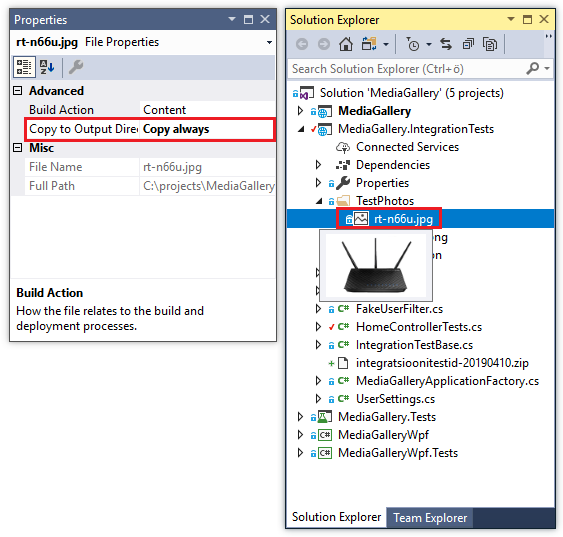File Uploads in ASP.NET Core Integration Tests
Learn more about file uploads and integration tests with ASP.NET Core.
Join the DZone community and get the full member experience.
Join For FreeWriting integration tests for ASP.NET Core controller actions used for file uploads is not a rare need. It is fully supported by ASP.NET Core integration tests system. This post shows how to write integration tests for single and multiple file uploads.
Getting Started
Suppose we have controller action for file upload that supports multiple files. It uses a complex composite command for image file analysis and saving. Command is injected to action by framework-level dependency injection using controller action injection.
[HttpPost]
[Authorize(Roles = "Admin")]
public async Task<IActionResult> Upload(IList<IFormFile> files, int? parentFolderId,
[FromServices]SavePhotoCommand savePhotoCommand)
{
foreach(var file in files)
{
var model = new PhotoEditModel();
model.FileName = Path.GetFileName(file.FileName);
model.Thumbnail = Path.GetFileName(file.FileName);
model.ParentFolderId = parentFolderId;
model.File = file;
list.AddRange(savePhotoCommand.Validate(model));
await savePhotoCommand.Execute(model);
}
ViewBag.Messages = savePhotoCommand.Messages;
return View();
}We want to write integration tests for this action but we need to upload at least one file to make sure that command doesn’t fail.
Making Files Available for Integration Tests
It’s good practice to have files for testing available no matter where tests are run. It’s especially true when writing code in a team or using a continuous integration server to run integration tests. If we don’t have many files, and the files are not large, then we can include those files in the project.
One important thing is to specify in Visual Studio that these files are copied to the output folder.

In the same way, it’s possible to also use other types of files, and nobody stops us from creating multiple folders or folder trees if we want to organize files better.
Uploading Files in Integration Tests
Here is the integration test class for the controller mentioned above. Right now, there’s only one test and it is testing the Upload action. Notice how image files are loaded from the TestPhotos folder to file streams and how we form data objects that are built using the file streams.
public class PhotosControllerTests : IClassFixture<WebApplicationFactory<Startup>>
{
private readonly WebApplicationFactory<Startup> _factory;
public PhotosControllerTests(WebApplicationFactory<Startup> factory)
{
_factory = factory;
}
[Fact]
public async Task Upload_SavesPhotoAndReturnSuccess()
{
// Arrange
var expectedContentType = "text/html; charset=utf-8";
var url = "Photos/Upload";
var options = new WebApplicationFactoryClientOptions { AllowAutoRedirect = false };
var client = _factory.CreateClient(options);
// Act
HttpResponseMessage response;
using (var file1 = File.OpenRead(@"TestPhotos\rt-n66u.jpg"))
using (var content1 = new StreamContent(file1))
using (var file2 = File.OpenRead(@"TestPhotos\speedtest.png"))
using (var content2 = new StreamContent(file2))
using (var formData = new MultipartFormDataContent())
{
// Add file (file, field name, file name)
formData.Add(content1, "files", "rt-n66u.jpg");
formData.Add(content2, "files", "speedtest.png");
response = await client.PostAsync(url, formData);
}
// Assert
response.EnsureSuccessStatusCode();
var responseString = await response.Content.ReadAsStringAsync();
Assert.NotEmpty(responseString);
Assert.Equal(expectedContentType, response.Content.Headers.ContentType.ToString());
response.Dispose();
client.Dispose();
}
}For actions that accept only one file, we need only one call to Add()method of formData.
Need an authenticated user for integration tests? Head over to my blog post Using ASP.NET Core Identity user accounts in integration tests.
Wrapping Up
Integration tests mechanism in ASP.NET Core is flexible enough to support more advanced scenarios like file uploads in tests. However, it’s not very straightforward, and we can’t just call a few methods of HTTP client to do it, but it’s still easy enough once we know the tricks. If we keep test files in the integration tests project, then we don’t have to worry about getting files to a machine where integration tests are running.
Published at DZone with permission of Gunnar Peipman, DZone MVB. See the original article here.
Opinions expressed by DZone contributors are their own.

Comments